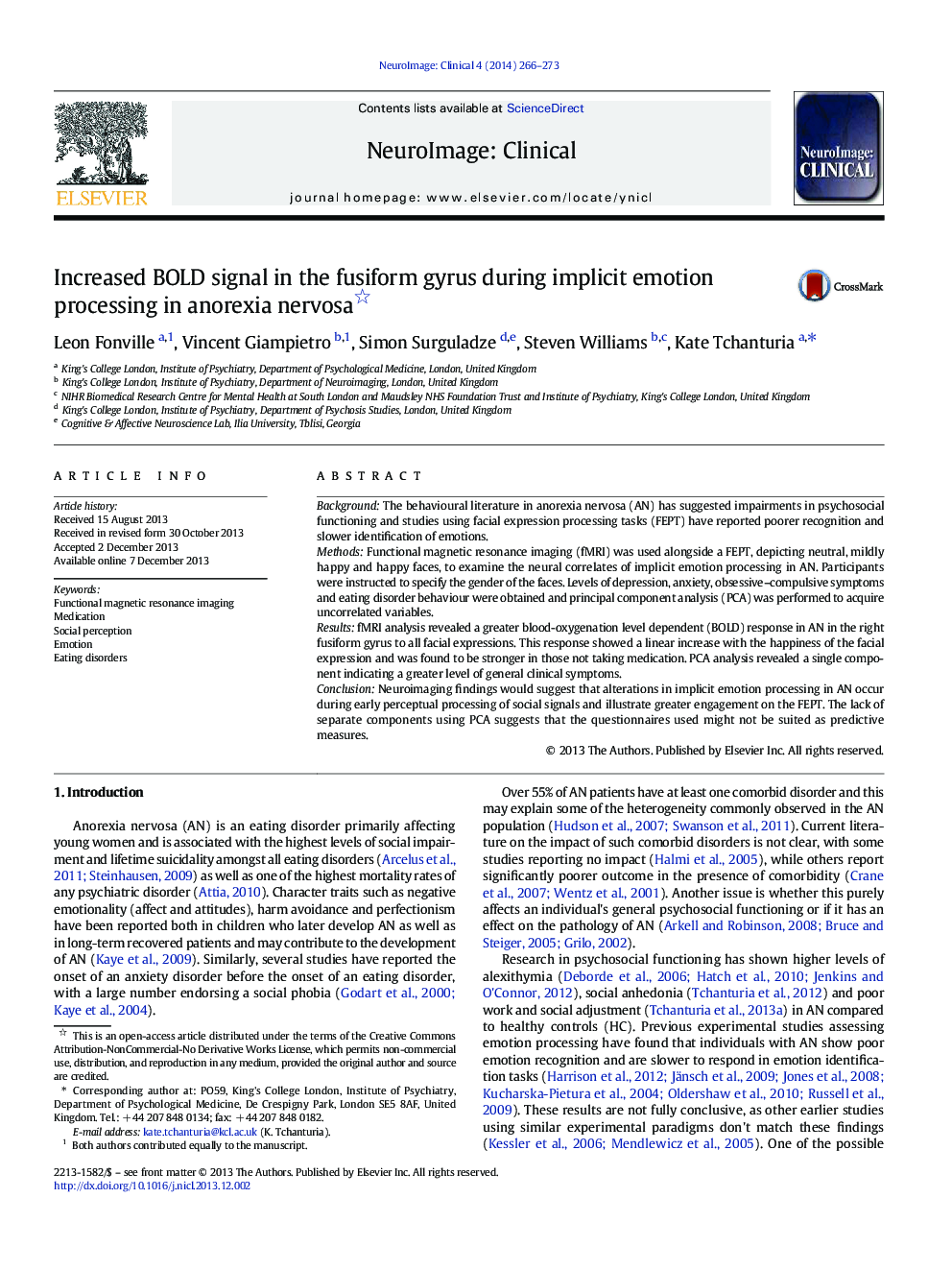| Article ID | Journal | Published Year | Pages | File Type |
|---|---|---|---|---|
| 3075306 | NeuroImage: Clinical | 2014 | 8 Pages |
•Greater BOLD response in AN in the right fusiform gyrus to all facial expressions.•The BOLD response showed a linear increase with the happiness of the expression•The BOLD response was stronger in those not taking psychotropic medication•These alterations occur during early perceptual processing of social signals
BackgroundThe behavioural literature in anorexia nervosa (AN) has suggested impairments in psychosocial functioning and studies using facial expression processing tasks (FEPT) have reported poorer recognition and slower identification of emotions.MethodsFunctional magnetic resonance imaging (fMRI) was used alongside a FEPT, depicting neutral, mildly happy and happy faces, to examine the neural correlates of implicit emotion processing in AN. Participants were instructed to specify the gender of the faces. Levels of depression, anxiety, obsessive–compulsive symptoms and eating disorder behaviour were obtained and principal component analysis (PCA) was performed to acquire uncorrelated variables.ResultsfMRI analysis revealed a greater blood-oxygenation level dependent (BOLD) response in AN in the right fusiform gyrus to all facial expressions. This response showed a linear increase with the happiness of the facial expression and was found to be stronger in those not taking medication. PCA analysis revealed a single component indicating a greater level of general clinical symptoms.ConclusionNeuroimaging findings would suggest that alterations in implicit emotion processing in AN occur during early perceptual processing of social signals and illustrate greater engagement on the FEPT. The lack of separate components using PCA suggests that the questionnaires used might not be suited as predictive measures.
